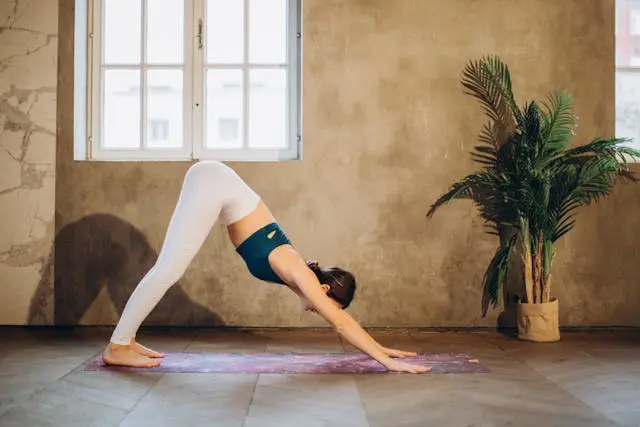Des exercices pour favoriser l'endormissement ? Oui, mais pas n'importe lesquels ! Nous vous proposons dans cet article 4 exercices simples et faciles à mettre en place issus de différentes pratiques comme le yoga ou la cohérence cardiaque pour vous plonger rapidement dans les bras de Morphée.
Pour un endormissement rapide et un sommeil réparateur, voici les quatre exercices incontournables pour dormir comme un bébé...
Créer le calme en soi, le but ultime
When not due to melatonin (sleep hormone) dysregulation, sleep problems are a symptom of difficulty letting go. Thoughts get restless, associations of ideas get carried away, small and big worries pollute the mind and the annoyance ofnot managing to fall asleep does not help the situation.
Il faut donc apprendre à créer des espaces de calme en soi. Bien que cela puisse être anxiogène pour les personnes souffrant d'angoisse de vide (et par extension d'angoisse de mort) et de besoin de contrôle, faire le silence dans son corps permet à celui-ci de se poser, de se déposer et de s'abandonner et par effet de résonnance, l'esprit se calme, se détend et s'ouvre à l'apaisement. Le marchand de sable peut alors s'inviter...
Thus, there are many methods to learn how to make the vacuum in oneself to call sleep: posture of yoga, pranayama (yogic breathing exercise), mindfulness meditation, guided meditation, self-hypnosis, cardiac coherenceSchultz's autogenic training, sophrology, gentle gym...
1. Le yoga pour détendre le corps et l'esprit
Yoga is a spiritual and bodily practice to enter in communion with oneself. In the yogic tradition, the body and the mind are connected and interdependent. Thus, by acting on the body, you act on your mind. It is in this sense that yoga can help you improve the quality of your sleep and make it easier to fall asleep.
Of course, if you have been suffering from insomnia for years, you will need to practice regularly, and for some time, to really feel the effects.
La respiration est très importante dans la pratique du yoga. À ce propos, il faut noter que toute une branche est consacrée aux techniques de respiration, les pranayama.
Une respiration lente, profonde et abdominale doit être privilégiée pendant les postures: le ventre gonfle à l'inspiration et se dégonfle à l'expiration. À la fin, vous pouvez terminer allongée en pratiquant une respiration lente et profonde en bouchant alternativement la narine droite puis gauche.
Pour calmer les esprits vagabonds, les postures dites renversées (tête en bas) sont intéressantes ainsi que celles qui demandent de maintenir l'équilibre.
Elles recentrent, favorisent le calme intérieur, apaisent le mental, vident l'esprit et abaissent le rythme cardiaque.
- Head down dog adho mukha svanasana
- The tree vrikshasana.
- The Candle Sarvangasana.

2. Le training autogène de Schultz contre l'insomnie
Schultz autogenic training is a self-induction technique to achieve astate of deep relaxation and relaxation.
When you are comfortably installed, the session begins by repeating three times inwardly with your eyes closed: "I am completely calm.
Then, it is necessary to link the following 7 steps, each of which lasts about 3 minutes :
- Body weight: repeat several times "my right arm is heavy" until you feel the sensation of heaviness then, left and so on...Travel through your whole body: right and left arm, right and left leg, pelvis, head and finish with "My whole body is pleasantly heavy".
- Heat in the body: same process with the statement "my right arm is pleasantly warm", then left and ditto in all the rest of the body and finish with "my whole body is pleasantly warm".
- Heartbeat regularity: put your hand on your chest and repeat "my heart is beating quite calmly and regularly"
- Deep, slow and steady breathing: "I breathe calmly."
- Warmth and flexibility in the belly: repeat "my belly is flooded with heat".
- Freshness in the forehead: repeat "my forehead is pleasantly cool" and imagine a small, pleasantly cool wind blowing gently across the forehead.
- Warmth in the neck: repeat "my neck is relaxed and pleasantly warm".
With the 7 steps completed, you are in a state of deep relaxation and receptivity. At this point you can "implant" a new programming such as "It is easy and convenient for me to fall asleep each night peacefully" for example.
And to finish, repeat the formula "I am quite calmand quiet, my body is pleasantly heavy, warm, my heart beats calmly, my breathing is calm, my belly is flooded with warmth, my forehead is pleasantly cool, my neck is relaxed and pleasantly warm".
3. La cohérence cardiaque, une méditation laïque pour trouver le sommeil
The cardiac coherence is a breathing technique created by David O'Hare that lowers the heart rate and, as a result, reduces :
- blood pressure
- L'anxiété et autres troubles de l'humeur.
- discursive thoughts
- sleep disorders
Thus, cardiac coherence allows you to change the frequency of your brain and move it into alpha wave, the last step before the theta waves of meditative practices or re REM sleep (where dreams take place).
There are many videos on the net that allow you to get a good start on cardiac coherence by settling on the 4/6 frequency for example: 4 beats of inspiration for 6 beats of expiration.
4. La méditation de pleine conscience pour favoriser l'endormissement
Mindfulness is the art of living in the here and now. Out of any religious or spiritual purpose, mindfulness meditation was developed by psychiatrist Dr. Christophe Andre. Mindfulness meditation invites the practitioner to "be" before "doing". It is about settling down and letting one's senses soak up one's environment without judgment in order to create emotional distance and thus create astate of inner calm.
You can start by simply observing the room you are in: the color of the walls, the arrangement of the furniture, the objects etc... Then focus your attention by closing your eyes on the surrounding noises: a car passing in the street, the ticking of a watch, the background noise of a fridge, the ventilation of a computer, the VMC ... Then, the smells: the laundry, a room fragrance, the dog , the kitchen, the smell of smoke from the fireplace...
Then the taste: of your saliva, your previous meal, your last cigarette, toothpaste...
And finally the sensations: the sheets on your skin, the weight of your blanket, the difference between the covered and uncovered areas, the density of the mattress, the pillow...
This practice invites you to settle into the present moment and practice being non-judgmental. The calm found, the relaxation invoked, your sleep should invite itself...
À lire aussi : Les bénéfices de la relaxation



